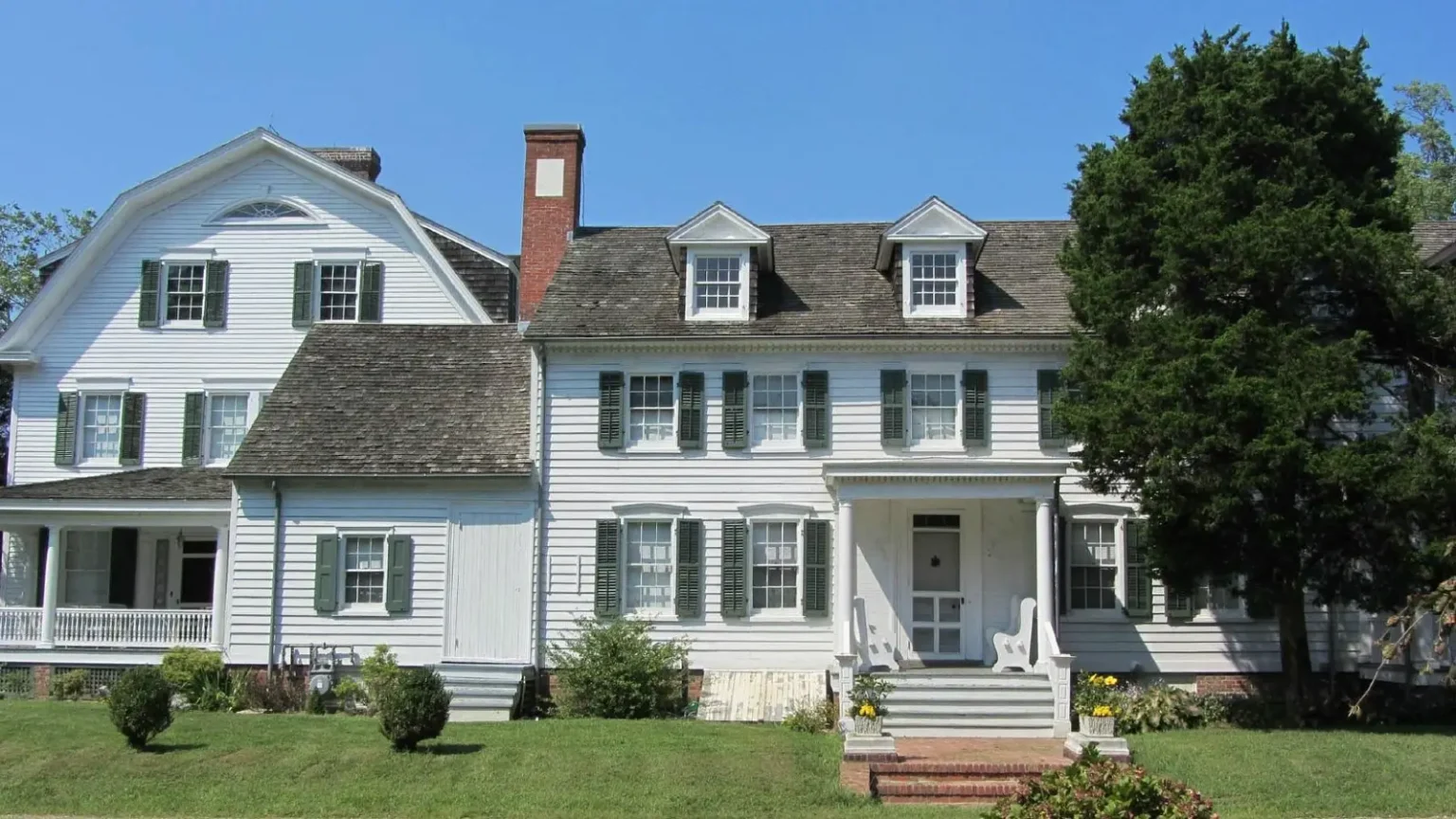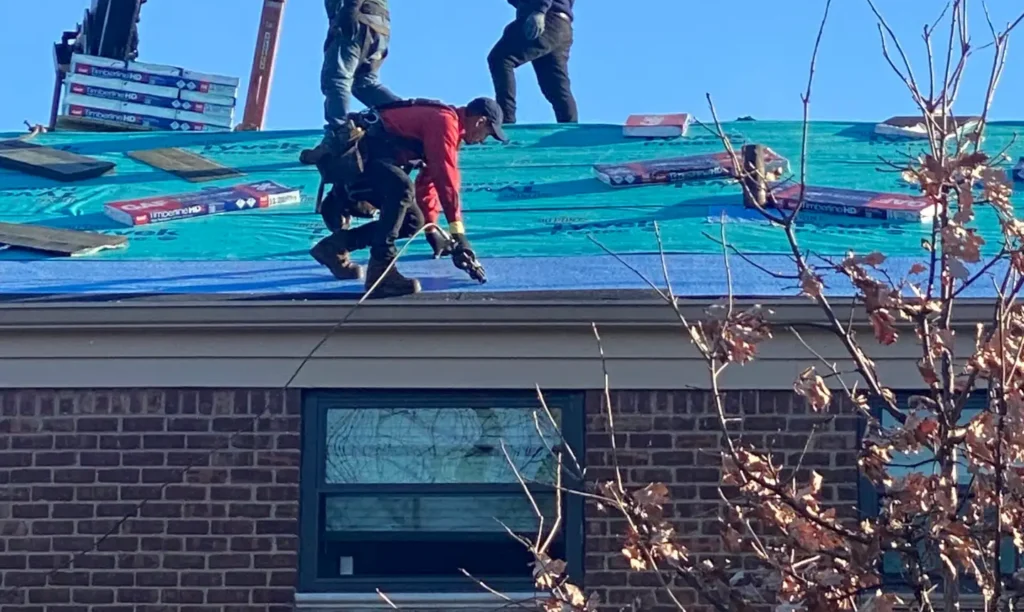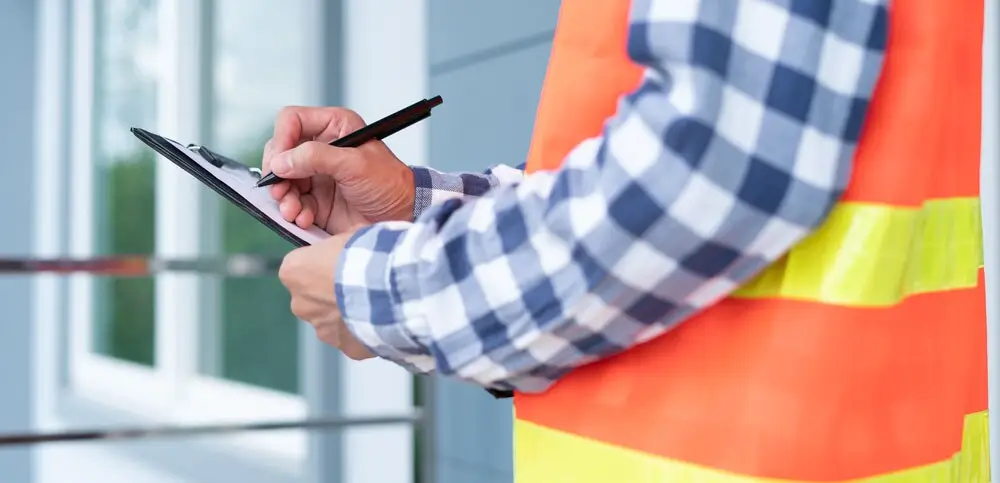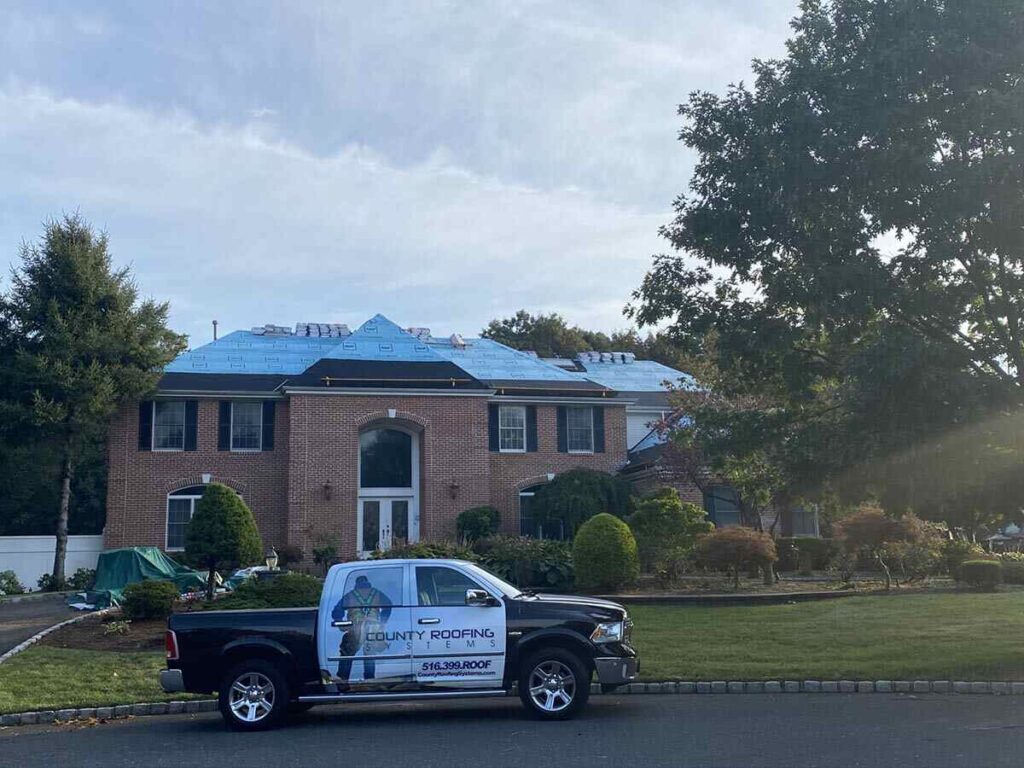How to Protect Your Long Island
Roof from Storm Damage

UPDATED FOR 2025
Read on to learn how to protect your Long Island home this next storm season, including a pre-season roof inspection checklist and critical preventative measures.
Key Takeaways:
- Hurricane season runs June 1-November 30 but Long Island has experienced major storms outside this window—the 1938 Hurricane hit September 21 with 150 mph winds
- Pre-season inspections catch 80% of vulnerabilities before storms strike—loose shingles, failed flashing, and compromised seals that become major problems in hurricane-force winds
- Shingles 6+ years old lose adhesive strength and become vulnerable to wind uplift—reinforcement before storm season prevents catastrophic damage
- Wind speeds on Long Island’s South Shore reach 20-30 mph higher than inland areas due to direct ocean exposure
- Professional preparation costs $500-$2,500 while hurricane repairs average $5,000-$15,000+—prevention delivers 3-5x cost savings
Long Island’s Hurricane Reality Check
You dismiss the hurricane watch. Long Island rarely gets direct hits, right?
That’s what everyone thought on September 21, 1938.
The “Long Island Express” slammed into the island as a Category 3 hurricane with 150 mph winds. No warning. No time to prepare. The storm destroyed over 4,500 homes and killed more than 60 people across Long Island and New England.
More recently, Superstorm Sandy proved Long Island’s vulnerability hasn’t changed. The 2012 storm brought a record 13.88-foot storm surge to Battery Park, destroyed thousands of homes, and left millions without power.
Here’s the reality: Long Island sits directly in the path of Atlantic hurricanes tracking up the Eastern Seaboard. Our position makes us vulnerable to both direct hits and the devastating effects of storms passing offshore.
Your roof represents your home’s first—and most critical—line of defense against hurricane destruction.

Why Long Island Roofs Face Unique Hurricane Risks
Long Island’s geography creates specific vulnerabilities that mainland properties don’t face.
Our barrier island South Shore takes the full force of Atlantic storms. There’s nothing between the Hamptons, Fire Island, and Jones Beach and the open ocean. When hurricanes approach from the southeast—the most common track—these communities face direct wind and storm surge impacts.
The North Shore faces different challenges. Storms tracking up the Sound create wind tunnels that funnel between the mainland and the island, intensifying wind speeds and testing roof structures.
Long Island’s relatively flat topography means nothing slows hurricane winds as they sweep across the island. A storm hitting the South Shore at 100 mph still has 90+ mph winds when it reaches the North Shore.
Salt air weakens roofing systems year-round. By the time hurricane season arrives, coastal roofs already show accelerated wear from constant salt exposure. Corroded fasteners, deteriorated sealants, and weakened adhesives fail first when storm winds hit.

When Hurricane Season Actually Threatens Long Island
Official Atlantic hurricane season runs June 1 through November 30. But Long Island’s real vulnerability window starts earlier and extends later.
May and early June bring severe thunderstorms with straight-line winds that rival tropical storm conditions. These systems test your roof’s wind resistance before hurricane season even begins.
September represents Long Island’s peak danger month. Historical data shows more hurricanes have impacted our region in September than any other month. The 1938 Hurricane, the 1821 Norfolk and Long Island Hurricane, and numerous other major storms all struck in September.
October and November still pose risks. Hurricane Sandy hit on October 29, 2012. Late-season storms often carry more moisture and move faster, giving less preparation time.
Don’t wait until hurricane warnings appear to protect your roof. By then, roofing contractors are swamped with emergency calls, materials become scarce, and you’re forced to attempt last-minute measures that rarely work.
May is your preparation month. Complete inspections and repairs while contractors have availability and before summer weather complicates roofing work.
Your Pre-Season Roof Inspection Checklist
Professional inspections catch problems you’ll miss from the ground. But understanding what inspectors look for helps you recognize warning signs between formal inspections. Visible signs of damage, such as missing shingles or granule loss, are key indicators to watch for during your own roof checks.
Shingle Condition and Adhesion
Check every shingle for proper adhesion to the roof deck. Shingles installed six or more years ago lose adhesive strength—the sealant strips that hold shingles down weaken over time.
Look for curling edges, especially on ridge and hip shingles. These high-point shingles face the strongest wind uplift and fail first during hurricanes. Strong winds can cause shingles to break their sealing bond, making them more vulnerable. Once the first ridge shingle blows off, the next becomes vulnerable, creating a domino effect across your roof.
Missing granules signal advanced wear. If you see bare spots where the asphalt shows through, those shingles won’t survive hurricane winds.
Cracked, broken, or brittle shingles need immediate replacement. Broken shingles are a common result of storm impact and should be addressed promptly. They’ll shatter in high winds, creating entry points for water that destroys roof decking in hours.
Flashing Integrity
Flashing around chimneys, skylights, and vents represents your roof’s most vulnerable points during hurricanes. Water doesn’t flow around these penetrations—it concentrates there.
Check for rust or corrosion on metal flashing, and be alert for broken flashing as well. Salt air attacks flashing aggressively, and corroded or broken flashing fails catastrophically during storms.
Look for gaps where flashing meets roofing materials. Even small separations allow wind-driven rain to penetrate. Hurricane winds push water into openings that shed rain during normal storms.
Inspect chimney flashing especially carefully. The multi-plane junction where chimney meets roof creates complex waterproofing challenges. Failed or broken chimney flashing causes more hurricane leaks than any other single vulnerability.
Roof Deck and Structure
From inside your attic, inspect the underside of your roof deck. Look for water stains, dark spots, or actual daylight showing through. Any light penetration means your roof has gaps that hurricane winds will exploit. After heavy snowfall, ice dams form when melting snow refreezes at the roof edge, causing water to back up and potentially leak into the attic.
Check for sagging areas that indicate structural weakness. Roofs that sag can’t resist hurricane wind uplift and often fail catastrophically during major storms. Heavy snow accumulation can add significant weight to the roof, increasing the risk of sagging or even collapse.
Verify that your roof deck is securely fastened to trusses and rafters. Loose deck sections become dangerous projectiles during hurricanes, and water penetrates through gaps almost immediately.
Gutters and Drainage
Gutters must channel massive water volumes during hurricanes. Clogged gutters overflow, directing water under roof edges and into your home’s walls and foundation.
Check for proper slope. Gutters that don’t drain completely leave standing water that backs up under shingles during wind-driven rain.
Inspect gutter fasteners and hangers. Loose or broken gutters and downspouts can lead to improper drainage and should be repaired before hurricane season, as they may pull away from your house during storms, often taking fascia boards and roof edge materials with them.
THE BEST WARRANTIES IN THE INDUSTRY- ONLY 2% OF ROOFING COMPANIES CAN OFFER
25-Year Labor, 50-Year Material Warranty
We’ve met the toughest requirements in the residential roofing industry- and we use only the best materials.
That’s why we stand behind our work with the best warranties in the industry- warranties only 2% of the roofing industry can offer.
Your house deserves the best roofing warranty on the market. Give us a call today and get a brand new roof with a 25-year labor, 50-year material warranty from the best roofing contractor throughout Long Island and New York.
Critical Reinforcement Measures for Long Island Homes
Standard roofing installation meets code for normal weather. Hurricane preparation requires enhanced measures beyond standard construction.
If you have a damaged roof, reinforcing it before hurricane season is critical to prevent further storm-related issues.
Secure Loose or Vulnerable Shingles
Apply roofing cement to shingle edges, especially along rakes and eaves where wind gets underneath materials first. These perimeter shingles face the highest wind forces and need additional adhesion.
Reinforce hip and ridge shingles with extra fasteners. Building codes require minimum fastener counts, but hurricane-prone areas benefit from additional securing.
Replace any damaged shingles immediately. One compromised shingle creates an entry point for wind that can peel entire sections off your roof.
Strengthen Roof Structure
For homes with gable roofs—the most vulnerable design in hurricanes—ensure gable ends are properly braced. Gable walls face tremendous wind pressure and often fail during major storms, compromising your entire roof structure.
Install hurricane straps if your roof lacks them. These metal connectors tie roof trusses directly to wall framing, preventing uplift that causes roof failure.
Verify your roof deck is secured with construction adhesive between trusses and decking. This enhancement significantly improves wind resistance.
Address Ventilation Vulnerabilities
Seal gable vents during hurricane warnings. Open vents allow wind pressure to build inside your attic, pushing upward on your roof deck while winds pull from above—a combination that tears roofs off.
Install hurricane-rated ridge vents designed to resist wind infiltration while maintaining necessary attic ventilation between storms.
Check soffit vents for damage or loose sections. Wind-driven rain penetrates damaged soffits, soaking insulation and roof deck from below.
Protect Vulnerable Components
Secure or remove roof-mounted equipment before storms. Satellite dishes, antennas, and HVAC equipment become projectiles or create uplift points that damage surrounding roofing materials.
Trim overhanging tree branches now, before summer growth makes the job harder. Branches that seem safely distant in May can reach your roof by September when storms typically strike Long Island. As part of your storm preparation checklist, inspect your windows for cracks, broken glass, or loose weather-stripping to help prevent water intrusion and further damage.
Clear debris from roof valleys. Accumulated leaves and branches block drainage during heavy rain, creating pools that find weaknesses in your roofing system.
Emergency Supplies Every Long Island Homeowner Needs
When hurricane warnings appear, preparation time drops to hours. Having supplies ready means you can secure your property instead of searching stores.
Keep heavy-duty tarps and rope on hand. If damage occurs, quick covering prevents water from destroying your home’s interior before professional repairs arrive.
Stock roofing cement, caulk, and emergency patching materials. Small leaks discovered during a storm can be temporarily sealed to minimize damage.
Maintain an emergency toolkit with heavy-duty staples, nails, hammer, and cordless drill. Battery-powered tools work when power fails.
Document your roof’s condition with photos before hurricane season. This documentation proves pre-existing condition to insurance companies if storm damage occurs.
Keep important documents—including insurance policies, property deeds, and contractor information—in waterproof containers or digitally backed up off-site.
What to Do When Hurricane Warnings Arrive
Forecasts give Long Island 24-72 hours warning before major storms. Use that time systematically. After the storm passes, refer to a roof storm checklist to guide your inspection and emergency steps, ensuring you address any roof damage quickly and safely.
72 Hours Before Landfall
Complete final roof inspection. Look for any new damage or vulnerabilities that developed since your pre-season inspection.
Secure loose items on your property. Patio furniture, grills, and lawn decorations become dangerous projectiles that damage roofs during hurricanes.
Contact your roofing contractor to confirm post-storm availability. Established contractors prioritize existing customers during emergencies.
Photograph your entire property, including all sides of your roof, for insurance documentation.
24-48 Hours Before Landfall
Install temporary protective measures if needed. Tarps over vulnerable areas provide last-resort protection when time doesn’t allow proper repairs.
Bring in or secure anything that could blow away. Remove items from porches, secure trash cans, take down temporary structures.
Clear gutters and downspouts one final time. Ensure drainage systems can handle extreme rainfall.
Move vehicles away from large trees that could fall on them and your home.
During the Storm
Stay off your roof. Hurricane winds make roof access deadly dangerous, and emergency services can’t reach you during the worst conditions.
Monitor your attic if safe to do so. Watch for water leaks, such as staining or dripping, as early detection lets you place buckets and tarps to minimize interior damage.
Document any damage as it occurs if you can do so safely. Photos and videos support insurance claims.

Post-Hurricane Inspection and Damage Assessment
The storm has passed. Now comes critical damage assessment that determines whether problems get fixed or get worse. It’s important to check for other damage beyond the obvious issues, such as dents, hail marks, or missing components, to ensure a thorough inspection.
Immediate Safety Checks
Wait for official all-clear before going outside. Downed power lines, weakened trees, and structural damage create hazards in the hours after storms.
Never walk on your roof immediately after a hurricane. Wind and rain may have weakened decking that looks fine but won’t support your weight.
Look for obvious damage from the ground. Missing shingles, displaced flashing, and visible structural issues require immediate professional attention.
Thorough Damage Documentation
Photograph all damage from multiple angles. Take wide shots showing damage location and close-ups showing details. Be sure to look for and document hail impacts, such as dents or marks on shingles and gutters, as these are important for insurance claims.
Document water intrusion points inside your home. Ceiling stains, wall dampness, and attic leaks all connect to specific roof damage points. Also, note any signs of hail damage, as this can affect both your insurance claim and the necessary repairs.
Note the time and date of all documentation. This timeline proves damage occurred during the storm for insurance purposes.
Emergency Temporary Repairs
If you can access damage safely, apply temporary protection. Tarps properly secured prevent additional water damage while you wait for professional repairs.
Don’t attempt permanent repairs yourself. Hurricane damage often includes hidden structural issues that only professionals recognize.
Place buckets under active leaks. Empty them regularly to prevent overflow damage to floors and ceilings.
Professional Inspection Scheduling
Contact your roofing contractor immediately after the storm. Contractors prioritize customers based on call order and damage severity.
Expect delays. Major hurricanes create massive demand for roofing services, and qualified contractors handle hundreds of emergency calls.
Beware of storm chasers—unlicensed contractors who appear after disasters offering immediate repairs at premium prices. They disappear when problems develop, leaving you with shoddy work and no recourse.
Post-Hurricane Inspection and Damage Assessment
The storm has passed. Now comes critical damage assessment that determines whether problems get fixed or get worse.
It’s important to check for other damage beyond the obvious issues, such as dents, hail marks, or missing components, to ensure a thorough inspection.
Immediate Safety Checks
Wait for official all-clear before going outside. Downed power lines, weakened trees, and structural damage create hazards in the hours after storms.
Never walk on your roof immediately after a hurricane. Wind and rain may have weakened decking that looks fine but won’t support your weight.
Look for obvious damage from the ground. Missing shingles, displaced flashing, and visible structural issues require immediate professional attention.
Thorough Damage Documentation
Photograph all damage from multiple angles. Take wide shots showing damage location and close-ups showing details. Be sure to look for and document hail impacts, such as dents or marks on shingles and gutters, as these are important for insurance claims.
Document water intrusion points inside your home. Ceiling stains, wall dampness, and attic leaks all connect to specific roof damage points. Also, note any signs of hail damage, as this can affect both your insurance claim and the necessary repairs.
Note the time and date of all documentation. This timeline proves damage occurred during the storm for insurance purposes.
Emergency Temporary Repairs
If you can access damage safely, apply temporary protection. Tarps properly secured prevent additional water damage while you wait for professional repairs.
Don’t attempt permanent repairs yourself. Hurricane damage often includes hidden structural issues that only professionals recognize.
Place buckets under active leaks. Empty them regularly to prevent overflow damage to floors and ceilings.
Professional Inspection Scheduling
Contact your roofing contractor immediately after the storm. Contractors prioritize customers based on call order and damage severity.
Expect delays. Major hurricanes create massive demand for roofing services, and qualified contractors handle hundreds of emergency calls.
Beware of storm chasers—unlicensed contractors who appear after disasters offering immediate repairs at premium prices. They disappear when problems develop, leaving you with shoddy work and no recourse.

Insurance Claims and Documentation
Proper documentation determines whether insurance covers your damage or you pay out of pocket.
Contact your insurance company within 24-48 hours of damage discovery. Many policies have strict reporting timeframes. Be prepared to follow the claims process, which includes contacting your agent, preparing necessary documents, and understanding each step required to file and navigate your claim.
Take comprehensive photos and videos before making any repairs. Insurance adjusters need to see actual damage, not completed repairs.
Keep detailed records of all storm-related expenses. Temporary repairs, emergency tarping, and related costs may be reimbursable. Make sure to track when and how you are paid for these repairs, whether through an insurance check or out-of-pocket payments.
Get written estimates from licensed contractors. Insurance companies require professional damage assessments, not homeowner estimates. Once your claim is approved, you can schedule to have your roof replaced if necessary.
Also, understand your policy’s wind damage coverage. Some Long Island homeowners have separate deductibles for hurricane damage or wind-driven rain exclusions.
Why Professional Preparation Beats DIY
You might think you can handle roof-related hurricane preparation yourself. Here’s why that’s a dangerous assumption for Long Island homes.
Professional roofing contractors know Long Island’s specific vulnerabilities. We’ve seen what fails during nor’easters and hurricanes hitting our region. That experience can’t be replicated by watching YouTube videos.
We have equipment that makes proper inspections possible. Walking your roof without proper safety equipment and training is dangerous. We use harnesses, proper footwear, and techniques that keep everyone safe.
Our relationships with suppliers ensure material availability when homeowners can’t get what they need. When hurricanes threaten, big-box stores sell out of emergency supplies within hours. We maintain inventory for customer needs.
We understand what insurance companies require. Improperly completed emergency repairs can void coverage. Our work includes documentation and proper procedures that protect your insurance claims.
Addressing issues promptly after a storm helps prevent further roof damage, preserves your insurability, and reduces long-term repair costs. Timely inspections and repairs are essential to mitigate the impact of storm-related damage.
Hurricane preparation costs $500-$2,500 depending on your roof’s condition and necessary reinforcements. Hurricane repairs average $5,000-$15,000, with catastrophic damage reaching $50,000+.
The math is simple. Prevention delivers 3-5 times return on investment even if the storm barely affects your area.
Is It Time for a New Roof? What to Consider Before a Storm
If you’re noticing missing shingles, granule loss, or damaged flashing on your roof, it may be time to consider a new roof installation before hurricane season arrives.
These common signs of wear can leave your home vulnerable to water damage, structural damage, and costly repairs when severe storms hit. Investing in a new roof now can save you from much higher repair costs down the road.
When selecting a new roofing material, prioritize durability and wind resistance. Asphalt shingles remain a popular choice for Long Island homes due to their balance of cost and performance, but not all shingles are created equal—opt for high-quality, wind resistant varieties designed to withstand hurricane-force winds.
Metal roofing and concrete tile are also excellent options, offering superior protection against storm damage and long-term durability. Your professional roofing contractor can help you choose the best material for your property, ensuring it meets local building codes and complements your home’s architecture.
Before installation, request a detailed estimate from your roofing contractor so you understand the full replacement cost. Review your homeowners insurance policy to confirm what types of storm damage are covered and whether your new roof will qualify for any discounts or additional coverage.
A new roof not only protects your property from wind, water, and debris during storms, but can also increase your home’s value and energy efficiency.
Don’t wait for minor damage to become a major problem.

Choosing a Reputable Roofer for Hurricane Season
When hurricane season approaches, the strength of your roof can make all the difference in protecting your home from storm damage.
Choosing a reputable roofing company is the first step toward a hurricane proof roof that can withstand strong winds, heavy rain, and flying debris.
But not all roofers are created equal.
County Roofing Systems is not only fully licensed and insured, we’re Long Island natives who have been serving the area with the best roofing services available for over 35 Years.
But more than just experienced, we hold a standard for excellence that other local roofing companies strive to match.
Many roofing companies cut corners on lower quality materials and try to convince you on how great they are- all while charging you the same price you’d pay for the real thing.
We only use the best roofing materials in the industry. We’re not only GAF Master Elite certified, we’re a CertainTeed SELECT Shingle Master.
That means we’re certified to offer you the best materials available no matter the job or your preference. We know Long Island weather and we know what’s necessary to protect your roof and home from long-term seasonal damage.
Don’t wait until a storm is on the horizon—partner with County Roofing to protect your home, your investment, and your peace of mind this hurricane season.
County Roofing Systems: 35+ Years Protecting Long Island Homes
We’ve protected Long Island homes through every major storm since 1989. Hurricane Gloria, the 2011 Hurricane Irene, Superstorm Sandy—we’ve seen what hurricanes do to unprepared roofs.
That experience taught us exactly how to strengthen Long Island homes against hurricane damage. We know which vulnerabilities matter most in our specific climate and geography.
Our team includes CertainTeed SELECT Shingle Masters—a certification held by only 1% of roofing contractors nationwide. This expertise ensures your hurricane preparation meets the highest professional standards.
We never use subcontractors. You get our experienced crew who understand Long Island’s unique challenges and complete work to our exacting standards.
Don’t wait for hurricane warnings to protect your most valuable investment. Schedule your pre-season roof inspection now while contractors have availability and materials are readily available.
Call County Roofing Systems at (888) 366-6619 today to schedule your hurricane preparedness inspection.
We’ll identify vulnerabilities, recommend appropriate reinforcements, and help you enter hurricane season with confidence that your roof can handle whatever storms approach Long Island.
- First Approvals
- 0% financing
- No income check
- Up to 15 years
- Monthly payments as low as $149
Call today or contact us below for a FREE roofing estimate:
Frequently Asked Questions
When should I schedule my hurricane preparation inspection on Long Island?
Schedule your inspection in May before hurricane season officially begins June 1. This timing gives you adequate time to complete recommended repairs while contractors have normal availability. Waiting until June or later means competing for contractor time with other homeowners scrambling to prepare, and material prices often increase as demand spikes.
How much does professional hurricane roof preparation cost on Long Island?
Professional hurricane preparation typically costs $500-$2,500 depending on your roof’s current condition and necessary reinforcements. Basic inspections and minor securing cost toward the lower end, while comprehensive reinforcement including hurricane straps and extensive shingle securing approaches the higher range. This investment prevents repair costs averaging $5,000-$15,000 when storms strike unprepared homes.
Can I walk on my roof to check for hurricane damage?
Never walk on your roof during or immediately after a hurricane. Wind and rain may have weakened decking that appears intact but won’t safely support your weight. Even days later, wet conditions make roofs dangerously slippery. Professional roofers have proper safety equipment, training, and insurance for roof access. Document visible damage from the ground and leave physical inspections to qualified contractors.
What's the biggest mistake Long Island homeowners make before hurricane season?
The biggest mistake is waiting for hurricane warnings to appear before preparing their roof. By the time forecasts show a storm approaching Long Island, contractors are overwhelmed with emergency calls, materials sell out at suppliers, and you’re forced into last-minute measures that rarely provide adequate protection. Proper preparation happens in May before hurricane season begins, not in September when storms threaten.
Does homeowners insurance cover hurricane damage to Long Island roofs?
Most Long Island homeowners policies cover hurricane damage, but coverage varies significantly between policies. Many carriers impose separate wind damage deductibles (often 2-5% of home value) for hurricane claims. Some policies exclude wind-driven rain damage or require specific wind speed thresholds. Review your policy before hurricane season and contact your agent to clarify coverage specifics, deductibles, and required documentation procedures.
How do I know if my Long Island roof can survive a direct hurricane hit?
Only a professional inspection can determine your roof’s hurricane readiness. Critical factors include shingle age and condition (6+ year old shingles lose adhesive strength), flashing integrity, structural connections, and whether your roof has hurricane straps connecting trusses to walls. Homes built before modern hurricane codes often lack adequate structural connections. Schedule a professional assessment to identify specific vulnerabilities before storm season arrives.

